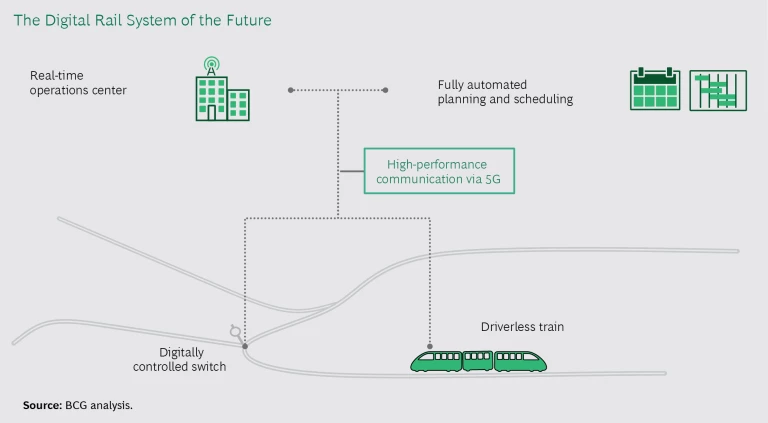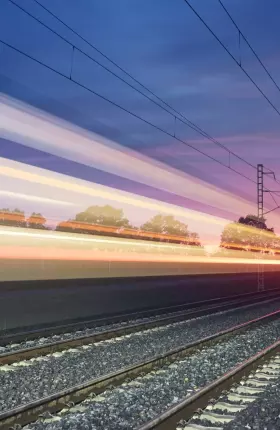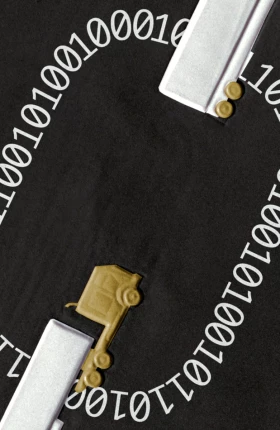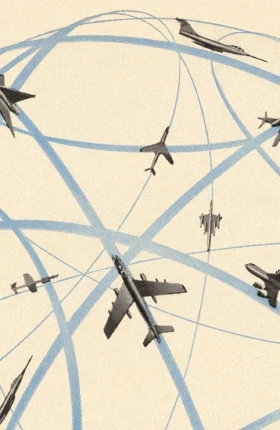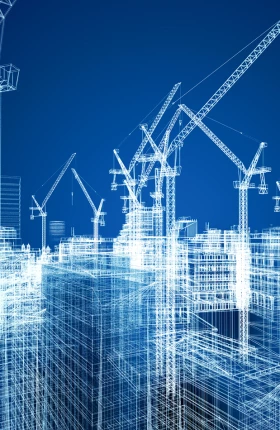The rail industry has historically adapted slowly to new technologies. Its approach to digital technologies has been no exception. Even as auto and truck manufacturers have raced to make the leap to autonomous vehicles, for example, rail operators have done relatively little to deploy driverless trains.
We believe that rail operators will need to accelerate the pace of change. Companies that manage rail service and infrastructure have little choice if they wish to hold their competitive ground, much less expand it. By embracing a digital transformation, operators can slash costs, improve service quality and reliability, and make maximum use of their physical assets. By failing to adapt, operators could put many rail systems at a severe—perhaps even fatal—competitive disadvantage to road-bound cargo and passenger services.
Driverless vehicles are projected to reduce the operating expenses of cargo services by about 50%—a massive shift that could change the game in the freight industry . And shared mobility services that offer subscribers cars and robo-taxis on demand are expected to be convenient and affordable new alternatives for rail passengers in many countries. Although rail will likely remain the preferred way to travel between major cities and within dense urban areas, having the flexibility to travel by car without owning one could change the riding habits of rail passengers in sparsely populated areas, affecting large swaths of systems.
Autonomous vehicles may provide affordable alternatives for rail operators’ customers.
Any significant loss of customers would hit the rail industry hard. Because fixed costs represent a high share of expenses, operators would not be able to compensate for falling traffic by cutting costs. And raising prices for rail services would cut cargo shipments and reduce ridership, setting in motion a vicious circle.
The Digital Future of Rail
In our work with European operators, we have developed a vision for a fully digital rail system. This vision goes far beyond just rolling out new standards, such as the European Train Control System (ETCS) standards, the pillar of the modernization strategies of most European operators. Rolling out ETCS technology, which is decades old, will not by itself future-proof the rail industry. The digital future of rail, as we conceive it, consists of three main components: driverless trains, real-time operations centers, and fully automated planning and scheduling. (See the exhibit.)
Driverless Trains. The most fundamental component of a driverless train is an automatic train operation (ATO) unit, which steers the train and processes steering input from the infrastructure. An ATO unit operates at one of four grades of automation (GoAs). In London’s Thameslink Program, for example, ATO-equipped trains operate at GoA 2, meaning that they are under the constant supervision of drivers, who are able to interfere if necessary. For the program’s trains to move up to GoA 4, unattended operation, three more advances are required. The first is implementing a real-time localization system, which enables far more precise steering and allows for much shorter headways—the distance or time between vehicles. The second advance is installing obstacle detection technology, which eliminates the need for the train driver to watch the tracks. And the third advance is implementing a system that digitally monitors passenger movement and safety, such as during boarding and disembarking. Several rail operators in Europe are using all of these technologies in pilot projects.
Real-Time Operations Centers. Driverless trains will deploy very similar technologies to those that are being used in autonomous cars, such as systems for detecting obstacles. But how these vehicles are guided will be different. On roads, autonomous cars will determine their own route. On tracks, trains will be guided by real-time operations centers that route them to their destinations. These centers will rely on a strong connectivity backbone between tracks and trains—a backbone that we expect will be made possible by 5G, the future mobile standard. We also anticipate that in Europe, track-train communications will be based on the further development of ETCS standards.
Fully Automated Planning and Scheduling. From a technology perspective, the least complex innovation in the rail system of the future is digital planning and scheduling. Today, most planning of routes, rolling stock, and personnel is done with the help of isolated IT solutions for individual assets. With the advent of artificial intelligence and the ability to simulate complex networks, there clearly will be significant opportunities to optimize the utilization of assets through more powerful solutions.
The Return on Digital Investment
Each of these components will clearly require massive investment. But the benefits of digitization—financially and in terms of capacity utilization—will be significant. At the very least, the benefits will put rail systems in a far stronger position to remain competitive with autonomous road-bound transportation. Indeed, the alternative—not investing in digitization—could prove fatal to many of today’s rail networks.
Digitization will put rail systems in a stronger position to remain competitive with autonomous road-bound transportation.
We estimate that digitization could reduce the operating expenses of rail operators by at least 15%. Some of the capital investment in digitization will also be offset by a significant reduction in the need for steel-and-concrete trackside infrastructure, such as signals.
An even more valuable benefit is that rail operators would be able to increase the transport capacity of their networks without building new physical infrastructure, which in many cases is nearly impossible because of public resistance or a lack of land. Depending on a system’s usage level, we estimate that full digitization could increase capacity by as much as 20%.
What Rail Operators Must Do Now
Many rail operators in Europe are currently in the process of defining their strategies for rolling out ETCS standards. Their decisions will set the technological paradigms of their rail systems for decades to come. Against this backdrop, we suggest that rail operators implement the following three imperatives:
- Develop a comprehensive technological vision. Operators should develop a roadmap for fully digitizing their operations. This will most likely build on their current ETCS rollout plans, but it will also go significantly beyond that. This vision is essential to ensure that near-term and midterm investments are already building the bridge into a fully digital future.
- Build a clear business case for investing in digitization. Many operators that already face massive investment for their standard ETCS deployment doubt that they can afford taking an even greater technological leap. However, creating a plan that includes investing in digitization—even incrementally—can show a much better return on investment than a standard ETCS rollout.
- Assess the organizational demands. A digital transformation requires many capabilities that are in short supply at rail companies. It is therefore important to identify capability gaps early and determine how to close them.
The comprehensive digitization of a rail system will be a long and complex process. But it is essential that rail service and rail infrastructure operators begin this journey now by making digitization a key priority and developing a strategy. Digitization will not only enable the industry to finally resolve chronic complaints about reliability and insufficient capacity but also help future-proof rail against a disruption that is coming at full speed.

